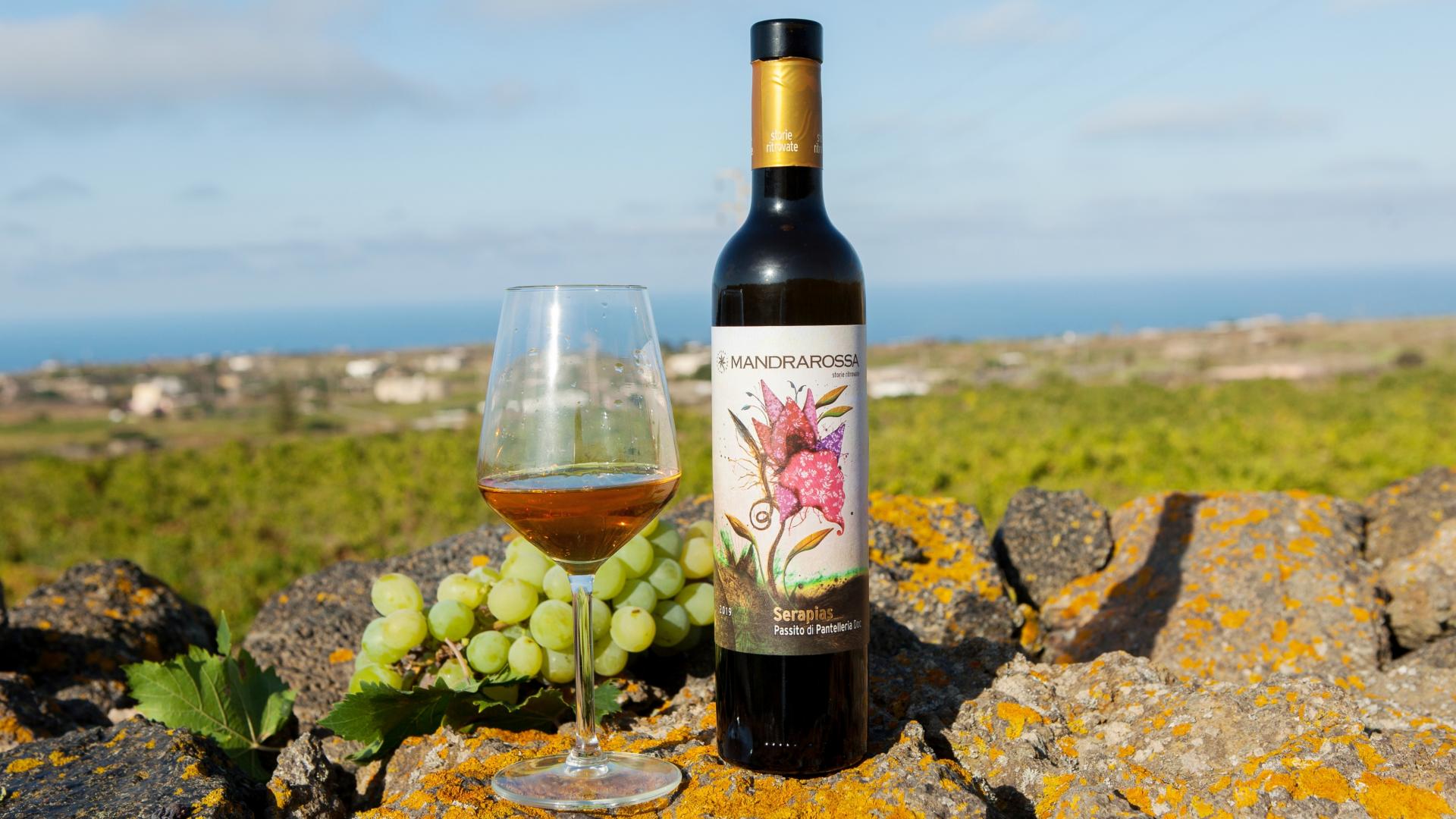
Mandrarossa launches Serapias, the Passito di Pantelleria named after a unique orchid.
The Passito Mandrarossa according to nature is born from about 2 hectares of Zibibbo and from a selection of grapes from three different districts
After reaching the foot of Etna, Mandrarossa crosses the sea to experiment with new projects. The journey to discover the “Unexpected Sicily”, the wine-producing Sicily that still needs to be experimented and narrated, reaches Pantelleria, the island known worldwide for the production of Passito, the seductive, aromatic and intense wine, created using the native Zibibbo grapes, a contemporary interpretation of the “yellow gold” that captivated the Carthaginians when they arrived on the island in 200 B.C.
The arrival to this island stuck in time was almost an enticement for Mandrarossa, at six navigation hours from the vineyards in Menfishire, the hills on the south-western coast of Sicily, where Mandrarossa’s journey began in 1999. From here, thanks to a suggestive light refraction phenomenon, on days that the sky is clear, it’s possible to see Pantelleria’s three peaks on the horizon, a magical island surrounded by the Mediterranean, jubilation of lava rock cliffs above the sea, sea stacks, dry-stone walls, dammusi, prickly pears, caper cultivations and of the well-known Zibibbo, the sapling that was proclaimed UNESCO heritage.
On the island, a place with a striking wild beauty, which the Greeks called Cossyra, generated by a submerged volcano, Mandrarossa cultivates about 2 hectares of Zibibbo. In the Karuscia district, on the inner slopes of the island, the company vinifies its Passito di Pantelleria, produced from a selection of grapes that come from three districts. The first is Bukkuram District, on the western side of the island, there is a small upland full of alberello vineyards that reach the sea; Piana della Ghirlanda, a stretch of vineyards that covers what 50 thousand years ago was the volcano’s caldera, and finally Monastero, the area with the most vineyards on the island in the beautiful valley delimited by the edge of the Zighidì caldera, with south-west exposure.
Serapias: the rediscovered story of a unique orchid
These vineyards and these typical terroirs produce a Passito according to nature. The result is “Serapias”, Mandrarossa’s Passito di Pantelleria DOC, named after the orchid from Pantelleria, a botanical species that exclusively grows on the island, just as the typical alberello vine used to produce this unique wine. An elegant flower that grows on the volcanic lands of the island, a peculiar orchid that blossoms in two hectares at the foot of Montagna Grande.
The Orchidea Serapias Cossyrensis is a native species: there is no other place in the world it grows, it only lives there, in that windy island in the centre of the Mediterranean. It blossoms every year between March and April and has intense shades of antique pink and purple. During its full blossom, it’s able to generate up to 12 beautiful bulbs and shares the peace of those remote locations with other wildflowers, the helichrysum rupestre and the capers. Its scent, carried by the sea breezes, flying through the hills mixing with the inebriating hints of the ripe Zibibbo, which expresses the strength of the land, of the sun and of the mineral energy providing graciousness and refined elegance.
The label
The new elegant label is part of the Storie Ritrovate product line and is illustrated, through a stylised representation of the orchid from Pantelleria, by the artist from Trieste Nancy Rossit who, after the Contrada Wines and the Etna Wines, came back to Mandrarossa’s Storie Ritrovate project, a project created with the goal of producing wines from Sicilian native single varieties, which could recall the true essence of the territories they come from.
The illustration by Nancy Rossit, visually narrates the expression of all the beauty and brightness of the orchids with antique pink petals and purple veining. It tells the story of the uniqueness of this flower that is also that of Serapias, Mandrarossa’s Passito.
A Passito according to nature
The harvest period is during the fourth week of August. The grapes are handpicked in crates, one part is withered for 20/22 days and then the raisins are added to the fermenting must, coming from the fresh grapes. The fermentation occurs in steel tanks at 16/18°C. The wine is then aged for 10 months in steel silos and for about three months in the bottle.
From this process, dictated by time and carried out by Mandrarossa according to tradition, a passito is created with a golden-yellow colour, with aromas of citrus, roses, jasmine and raisins.
The Passito di Pantelleria DOC Serapias will be put on the market starting October 2020, while the first vintage is 2019. The number of bottles, produced from plots of land that count a total of two hectares, is limited to about 6.000 units; the vinification was followed by Mimmo De Gregorio and the team of company oenologists, consulted by Alberto Antonini.
Tasting notes
The wine presents a good alcohol content and a bold minerality, which comes from the volcanic origin of the soils in Pantelleria. To the palate it’s full and round, with mineral and sweet flavours. The taste has a trace of flint stone. The finish is long and extremely persistent. It pairs perfectly with almond or ricotta cheese desserts and with spicy cheeses, and it’s the most sublime ending to a perfect banquet. For additional info see the technical chart.

